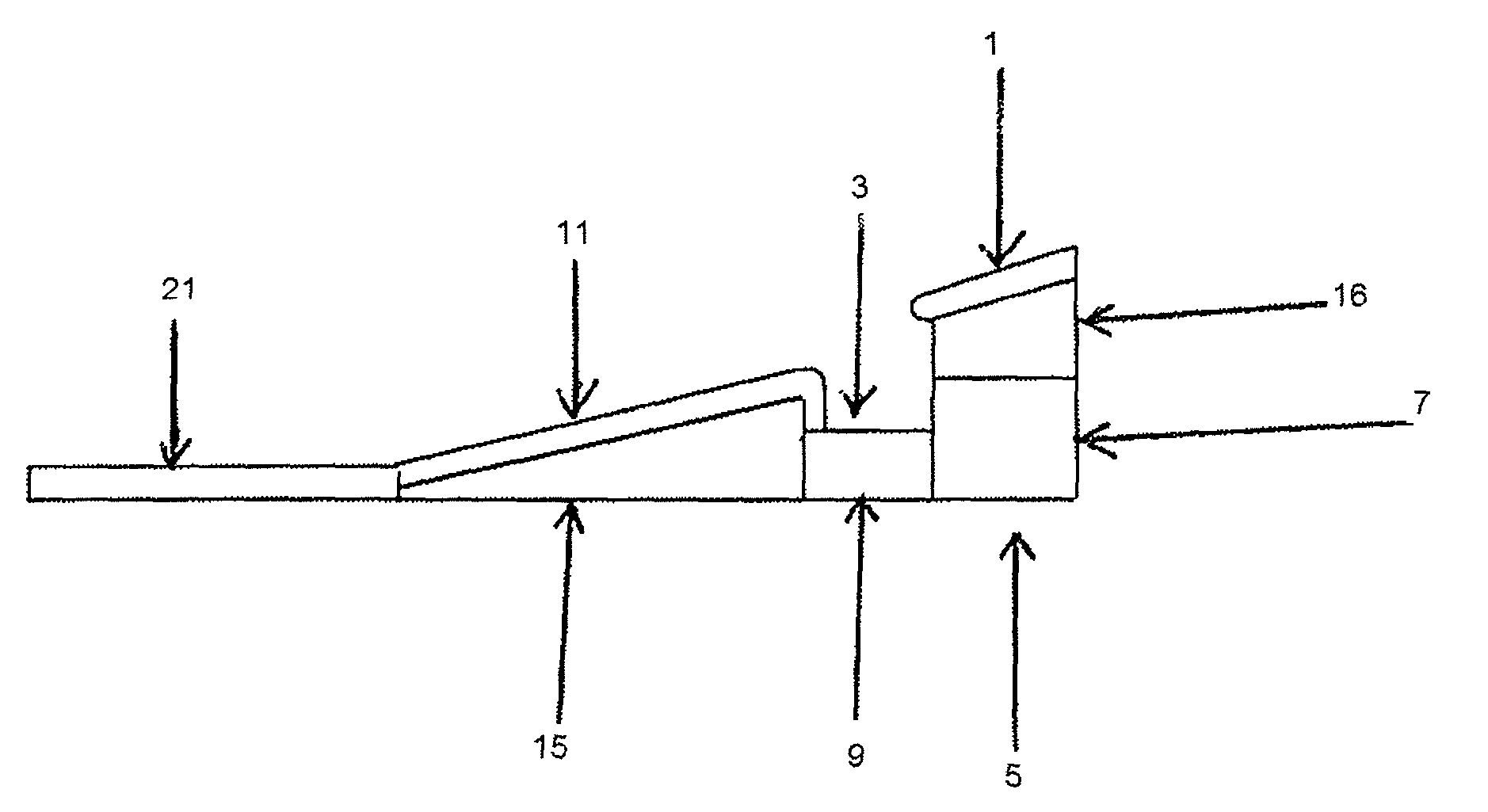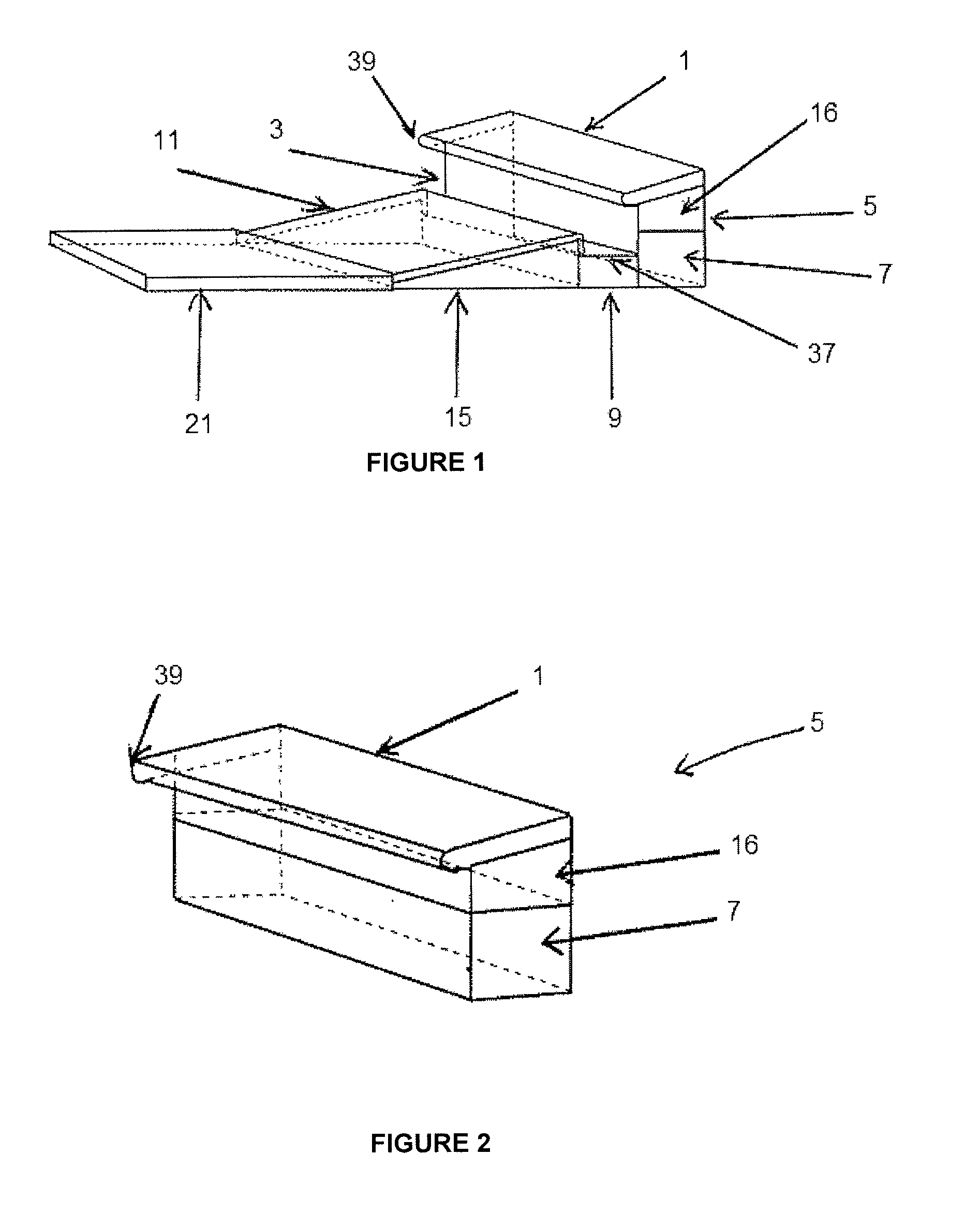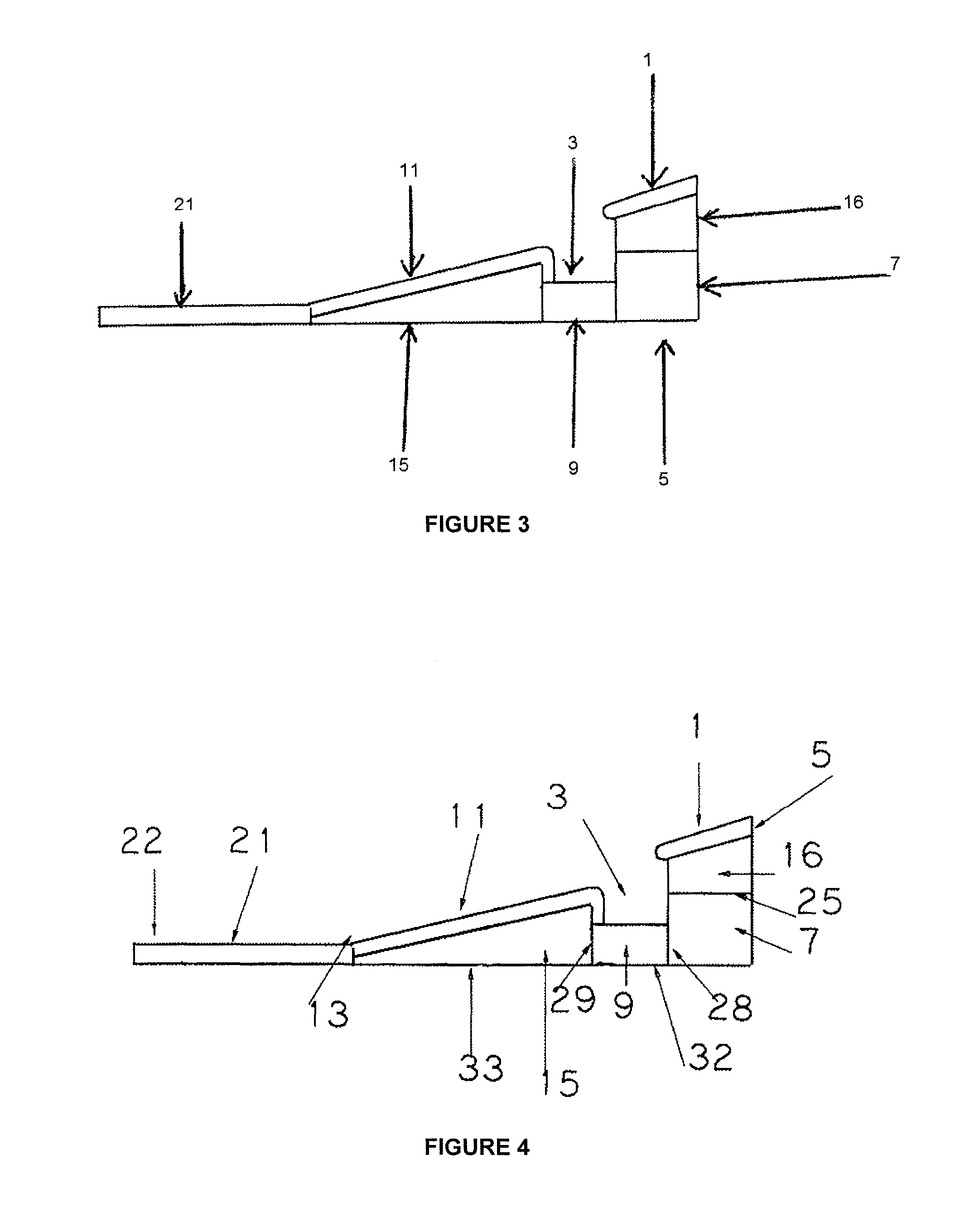Accordingly,
poor sleep leads to problems in these important areas of human biological function.
During sleep there is little or no conscious control over the body, thus if sufficient care is not taken prior to sleeping to ensure sufficient body comfort then snoring and
sleep apnea can become serious problems.
However these pillows may not work for all people as they typically only support the
head and neck.
This limitation in the design and construction arises due to the lack of a holistic approach to the body's need for posture and comfort.
When we are in a horizontal
lying position if sufficient care is not taken to align the head, neck and spine, the airways may not be clear and problems such as
sleep apnea and snoring may not be addressed.
However, many prior art pillow designs do not go far enough technically to address sleep problems such as snoring or
sleep apnea.
In particular comfort and posture are not appropriately addressed, with the result that the
throat muscles and the tongue relax during sleep.
The tongue or uvula and soft tissues in the
throat can fall back during sleep obstructing airways, causing the person to snore and / or temporally stop
breathing.
Pillows of the prior art with soft filling such as, but not limited to, feathers or any other soft material may not work, because it is difficult to maintain a constant firmness or density, which is required for comfort and proper sleep.
If such pillows only support the
head and neck, they may also
restrict the sleep positions, and may fail to address the problems of snoring and sleep
apnea.
Pillows of the prior art that are contoured in a particular form or moulded in a certain way often have limited flexibility and do not allow
free movement during sleep.
They limit the positions the user may take resting and sleep, and this can cause discomfort.
If such pillows only support the
head and neck, they may not address the problems of snoring and sleep
apnea.
Snoring is a problem associated with sleep apnea and the pillow of Zuberi does not seem to address that problem.
There is also a real likelihood of the user's arm developing a cramp in response to the weight of the head and the pillow resting on the arm.
Furthermore, the user may have difficulty turning from side to side to release the weight on their arm and this could lead to loss of sleep as the user tries to adjust to a new position.
Like almost all pillows, the pillow described in the Zuberi patent is shaped as a single unit and its design and function limit the ease with which a user may adjust the position of their body before and during sleep.
However, the device of Frisbee does not support the rest of the user's body, that is, it does not orient the user's body relative to the rest of the body in a manner that overcomes snoring problems.
Again, the device is shaped as a single unit and its design and function limit the ease with which a user may adjust the position of their body before and during sleep.
In a deeper sleep condition it is difficult for the head and neck to confine its self to set contour of this pillow.
However it is directed to the treatment of the
skin care and wrinkles and does not teach anything with respect to snoring or sleep apnoea.
This is position may not help a person with snoring or sleep apnea problems.
However the pillow lacks a holistic approach and is directed solely to head and neck support.
With respect to the latter two positions these pillows do not help with snoring related problems.
This type of pillow provides minimal support for the neck but lacks a holistic approach to user posture and can tend to interfere with normal sleep.
However, again the pillow provides support only for one part of the body and lacks a holistic approach to body support.
Again, this prior art supports only the head and neck and lacks a holistic approach to body support.
When the user enters the deeper levels of sleep and moves, the pillow will not assist them to maintain a constant comfortable position.
As this design is rigid, limited in
structure and function it can be difficult, during sleep or deep sleep for the user's body to conform to the requirements of this design.
One of the disadvantages of this design is that the user's body will need to adjust constantly during sleep, mostly because air pillows can become uncomfortable if the body sinks in too much or if it is too firm to allow the body to conform comfortably.
Accordingly, the design and structure of the pillow has
limited capacity to address problems such as snoring and sleep apnea.
Contour pillows are formed in a specific, fixed shape and some shapes do not provide any more support than ordinary pillows.
However the pillow cannot be modified to the individual needs of the user.
The pillow is limited in so far as it provides orthopedic cervical support for a user while they are sleeping on the back or side, but does not provide support for other parts of the spine.
Like almost all pillows it is shaped as a single unit and limited in design and function with respect to body adjustment before and during sleep.
One of the limitations of the structure of this pillow is that it restricts movement of the arm and shoulder when the user is sleeping on either side.
Furthermore, a significant amount of adjustment of the user's
body position is required when they change sides, which could result in loss of sleep or disturbed sleep.
Although it is restricted in structure, it would be difficult to make even minor adjustments as this may involve increasing or reducing water and air pressure.
Thus, the only contribution to mitigating closure of the user's airways during sleep is limited to the elevation of the user's upper body.
 Login to View More
Login to View More  Login to View More
Login to View More 


